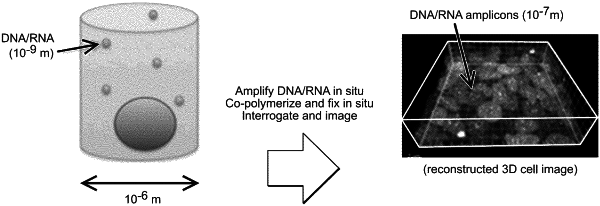| CPC C12Q 1/6806 (2013.01) [C12P 19/34 (2013.01); C12Q 1/6844 (2013.01); C12Q 1/6869 (2013.01); C12Q 1/6874 (2013.01)] | 29 Claims |

|
1. A method, comprising,
(a) providing a biological sample comprising a plurality of cells comprising a plurality of ribonucleic acid (RNA) molecules;
(b) generating a plurality of circularized nucleic acid molecules in said biological sample, wherein each of said plurality of circularized nucleic acid molecules comprises a nucleic acid sequence corresponding to a sequence of an RNA molecule of said plurality of RNA molecules;
(c) amplifying circularized nucleic acid molecules of said plurality of circularized nucleic acid molecules in a rolling circle amplification reaction to generate a plurality of amplicons in said biological sample; and
(d) using selective sequencing primers to sequence different subsets of said plurality of amplicons in said biological sample.
|